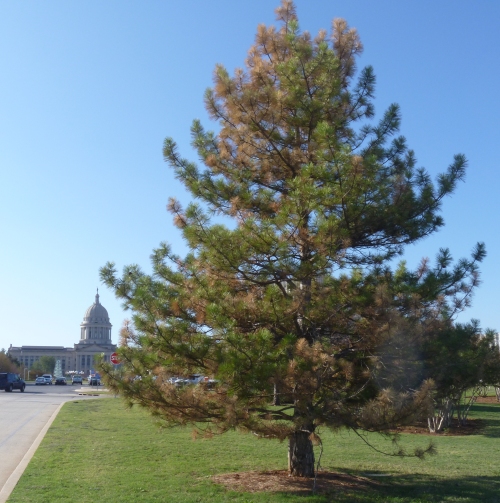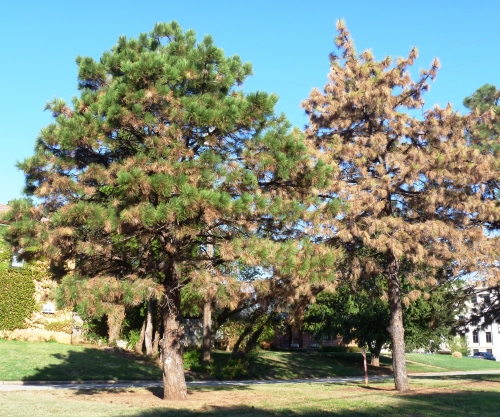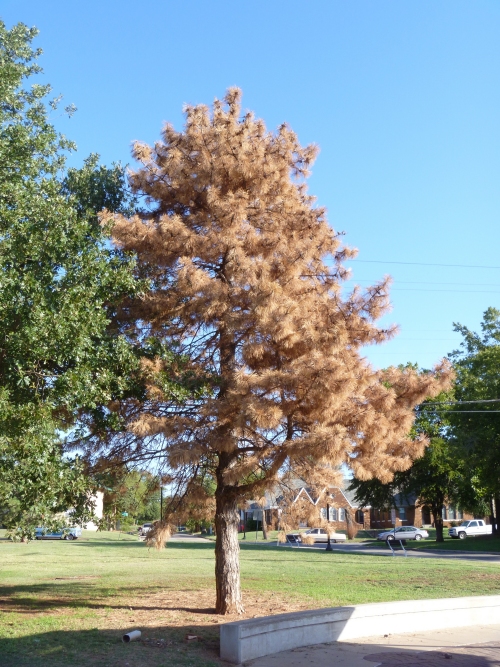Pine Wilt or Pine Wood Nematode
 Causal Agent
Causal Agent
The nematode Bursaphelenchus xylophilus
Hosts
The most common hosts in Oklahoma are Scotch, Austrian, and Japanese Black Pines, although other pines can become disease. The disease is more common in the eastern half of Oklahoma.
Symptoms
/programs/digital-diagnostics/plant-diseases/site-files/pine-wilt-or-pine-wood-nematode/pinewilt1.jpg
The disease is spread by the pine sawyer beetle, genus Monochamus, which lays eggs in the dying or dead tree. When the adult beetles emerge from the pine in the spring, they carry the nematode that causes pine wilt to healthy pines. As the beetle feeds, nematodes are deposited in the plant, which causes pine wilt to develop in the pine tree.
The symptoms of pine wilt closely resemble damage caused by environmental factors, primarily drought stress. It is important to sample trees and have them tested for pine wood nematodes to confirm that pine wilt was the cause of death. Branches near the trunk that measure at least 1 inch in diameter should be sampled. Contact your local county extension office about submitting samples for testing.
Control


